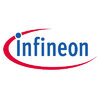Software Specialist
10+ Software Specialist Interview Questions and Answers
Asked in Softtek Solutions

Q. Do you know the architecture of McAfee and CrowedStrike? Did you work on the CrowedStrike console and service now?
I have knowledge of the architecture of both McAfee and CrowdStrike. I have worked on the CrowdStrike console but not on ServiceNow.
I am familiar with the architecture of both McAfee and CrowdStrike
I have hands-on experience with the CrowdStrike console
I have not worked on ServiceNow
I can provide more details on the architecture and functionality of both products if needed

Asked in eClinicalWorks

Q. What is DBMS, What type of DBMS you know?
DBMS stands for Database Management System. It is a software that manages databases and allows users to interact with them.
DBMS is a software system that allows users to create, retrieve, update, and manage data in a database.
There are different types of DBMS, such as relational DBMS (RDBMS), object-oriented DBMS (OODBMS), and NoSQL DBMS.
Examples of popular DBMS include MySQL, Oracle Database, Microsoft SQL Server, and MongoDB.
Software Specialist Interview Questions and Answers for Freshers

Asked in eClinicalWorks

Q. How do you get a count of records in a table?
Use SQL query with COUNT function to get the count of records in the table.
Use the SQL query: SELECT COUNT(*) FROM table_name;
Replace 'table_name' with the actual name of the table you want to count records from.
The COUNT function returns the number of rows that match the specified criteria.

Asked in LTIMindtree

Q. What is the difference between a HashMap and an ArrayList? Can you explain the internal implementation of a HashMap, the concurrent modification exception, and how streams and AWS Lambda relate to these concept...
read moreHashMap is a key-value pair data structure with constant time complexity for basic operations, while ArrayList is a dynamic array with linear time complexity for basic operations.
HashMap uses hashing to store key-value pairs, allowing for fast retrieval based on keys.
ArrayList is a resizable array that stores elements in a sequential manner.
ConcurrentModificationException occurs when a collection is modified while iterating over it.
Streams in Java provide a way to process col...read more

Asked in LTIMindtree

Q. Write some java8 code Multi thread concept File handling
Java8 code for multi-threading and file handling
Use ExecutorService to create and manage threads
Use Files class to read/write files
Example: ExecutorService executor = Executors.newFixedThreadPool(5);
Example: Files.write(Paths.get("file.txt"), "Hello World".getBytes());

Asked in eClinicalWorks

Q. How do you add a record to the table?
To add a record to a table, you can use SQL INSERT statement.
Use the INSERT INTO statement followed by the table name
Specify the column names and values to be inserted
Example: INSERT INTO employees (id, name, salary) VALUES (1, 'John Doe', 50000)
Software Specialist Jobs




Asked in Persistent Systems

Q. Explain how security can be implemented for .NET Core.
Security in .NET Core can be implemented through various mechanisms such as authentication, authorization, data protection, and secure coding practices.
Use authentication mechanisms like JWT tokens or OAuth for user identity verification
Implement authorization policies to control access to resources based on roles or claims
Utilize data protection APIs to encrypt sensitive data at rest and in transit
Follow secure coding practices to prevent common security vulnerabilities like...read more

Asked in eClinicalWorks

Q. How do you update a table?
To update a table, use SQL UPDATE statement with specified column values and conditions.
Use SQL UPDATE statement to specify the table name and set the new values for columns
Add a WHERE clause to specify the conditions for which rows to update
Example: UPDATE table_name SET column1 = value1, column2 = value2 WHERE condition;
Share interview questions and help millions of jobseekers 🌟


Asked in TCS

Q. What are joins in SQL?
Joins in SQL are used to combine rows from two or more tables based on a related column between them.
Joins are used to retrieve data from multiple tables based on a related column.
Common types of joins include INNER JOIN, LEFT JOIN, RIGHT JOIN, and FULL JOIN.
Example: SELECT * FROM table1 INNER JOIN table2 ON table1.column = table2.column;

Asked in TCS

Q. What is the difference between truncate and delete?
Truncate is a DDL operation that removes all rows from a table, while delete is a DML operation that removes specific rows.
Truncate is faster than delete as it doesn't generate any undo logs or triggers.
Truncate cannot be rolled back, while delete can be rolled back using the transaction log.
Truncate resets the identity of the table, while delete doesn't.
Truncate doesn't fire delete triggers, while delete does.
Truncate is non-logged operation, while delete is logged operation...read more


Q. What is your experience with Tableau?
My expertise in Tableau lies in data visualization, dashboard creation, and advanced analytics.
Data visualization using various chart types like bar graphs, line charts, and scatter plots
Creating interactive dashboards for easy data analysis
Utilizing advanced analytics features like forecasting and trend analysis

Asked in LTIMindtree

Q. What are the differences between Obj-Open, Obj-Browse, and Tab methods?
Obj open, obj browse, and tab methods are used for different data handling in software applications.
Obj Open: Used to open a specific object or record in detail. Example: Opening a patient record in a medical software.
Obj Browse: Allows users to view a list of objects or records without editing. Example: Browsing through a list of patients.
Tab Methods: Refers to navigating between different tabs in a user interface to access various functionalities. Example: Switching between...read more

Asked in eClinicalWorks

Q. use of constraints, DDL commands
Constraints and DDL commands are essential for defining and managing database structures.
Constraints ensure data integrity and consistency.
DDL commands are used to create, modify, and delete database objects.
Examples of constraints include primary keys, foreign keys, and check constraints.
Examples of DDL commands include CREATE TABLE, ALTER TABLE, and DROP TABLE.

Asked in Mastek

Q. What is JVM,JFK and JRE
JVM stands for Java Virtual Machine, JFK is not a relevant term in this context, and JRE stands for Java Runtime Environment.
JVM is a virtual machine that enables a computer to run Java programs
JRE is a set of software tools used for developing Java applications
Examples: JVM executes Java bytecode, JRE includes Java libraries and other necessary files

Asked in Sutherland Global Services

Q. Different ml algorithms
Different machine learning algorithms are used for various tasks like classification, regression, clustering, etc.
Supervised learning algorithms: Decision Trees, Random Forest, Support Vector Machines
Unsupervised learning algorithms: K-means clustering, Hierarchical clustering
Reinforcement learning algorithms: Q-learning, Deep Q Networks
Neural network algorithms: Convolutional Neural Networks, Recurrent Neural Networks

Asked in eClinicalWorks

Q. Type of joins
Joins are used to combine data from two or more tables based on a related column between them.
Types of joins include inner join, left join, right join, and full outer join.
Inner join returns only the matching rows from both tables.
Left join returns all the rows from the left table and matching rows from the right table.
Right join returns all the rows from the right table and matching rows from the left table.
Full outer join returns all the rows from both tables, with NULL val...read more

Asked in Persistent Systems

Q. Explain the AWS services you have worked with.
AWS offers a wide range of services for cloud computing, storage, databases, machine learning, and more.
AWS EC2 - virtual servers in the cloud
AWS S3 - scalable object storage
AWS RDS - managed relational databases
AWS Lambda - serverless computing
AWS SageMaker - machine learning platform
AWS DynamoDB - NoSQL database service
Interview Questions of Similar Designations
Interview Experiences of Popular Companies








Reviews
Interviews
Salaries
Users

















